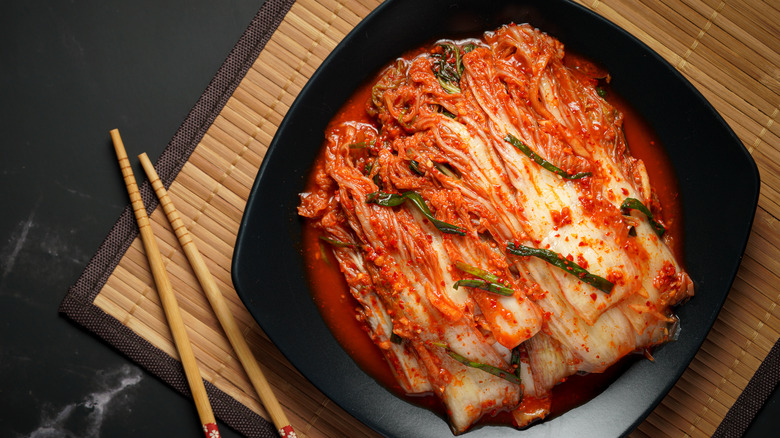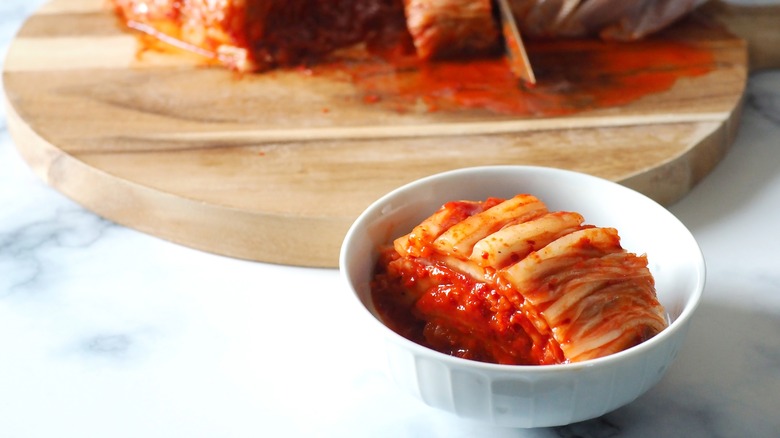How Kimchi Ingredients Differ Between North And South Korea
The result of the Korean War was that Korea was divided into two separate countries — North and South Korea — but the created border didn't stop North Korea from continuing to love the same dishes that their brothers and sisters in South Korea do.
Some traditional Korean dishes evolved into different variations since the end of the war in July 1953. This is the case with the ubiquitous dish called kimchi. Like in South Korea, kimchi is a staple of the North Korean diet. Although cabbage, like Napa, is perhaps the most popular vegetable to be made into kimchi, other foods can be used as well, including cucumbers, radishes and apples.
The spicy pickled banchan, or side dish, that is a staple of may meals in South Korea also has health benefits. According to WebMD, kimchi contains different vitamins, minerals, and antioxidants. Kimchi also contains choline, which is essential for maintaining a person's cells, muscles, memory, mood and nervous system. In addition, kimchi can improve digestive health and boost the immune system (via WebMD).
Kimchi in both South and North Korea are similar in nature, usually made with fermented vegetables, scallions, ginger, garlic and green chilies, according to Pok Pok Som. But there are a few key differences in each regional dish.
The spicier neighbor
After nearly seven decades of separation, the two countries that share a similar historical culture have developed noticable differences. One example is how kimchi is made.
In South Korea, kimchi is known to be spicier than in North Korea, per Koryo Tours. The amount and kind of chili flakes, called gochugaru, used in kimchi gives it its heat, according to Kimchi Recipes.
There are several key differences between kimchi made in North Korea and kimchi made in South Korea, according to Lacademie, which says that the northern variety is lighter in color and less spicy, but it is also tangier in taste. The differences, Lacademie states can be attributed to the conditions that are present in North Korea.
Kim Hyun-a told CNN that because the weather is colder in North Korea than in its southern neighbor, northern makers utilize sugar to help with the fermentation process. She also said kimchi in North Korea doesn't contain salted seafood like the pickled vegetable does in the south, and is also sweeter and lighter in taste, per the CNN story.
While these two countries stay separated by the Korean Demilitarized Zone (DMZ), it's likely their recipes for kimchi remain similar, yet worlds different.

